Truc Lam Bach Ma Zen Monastery – Not only a tourist destination in Hue, but also visitors can enjoy the ancient features of the temple, the patterns and motifs exalt the ancient, pure and elegant look. This place also has a subtle scent of incense, escaping from the world, listening to the sound of meditation bells, visitors can enjoy the feeling of relaxation, lightness, removing all worries.
1. Truc Lam Bach Ma Zen Monastery
Truc Lam Bach Ma Zen Monastery is located in the heart of Truoi Lake in Loc Hoa Commune, Phu Loc District, Thua Thien Hue Province. Not only is a Zen monastery belonging to the Truc Lam Yen Tu Zen sect in the Central region, this is also a scenic spot of Thua Thien – Hue province.
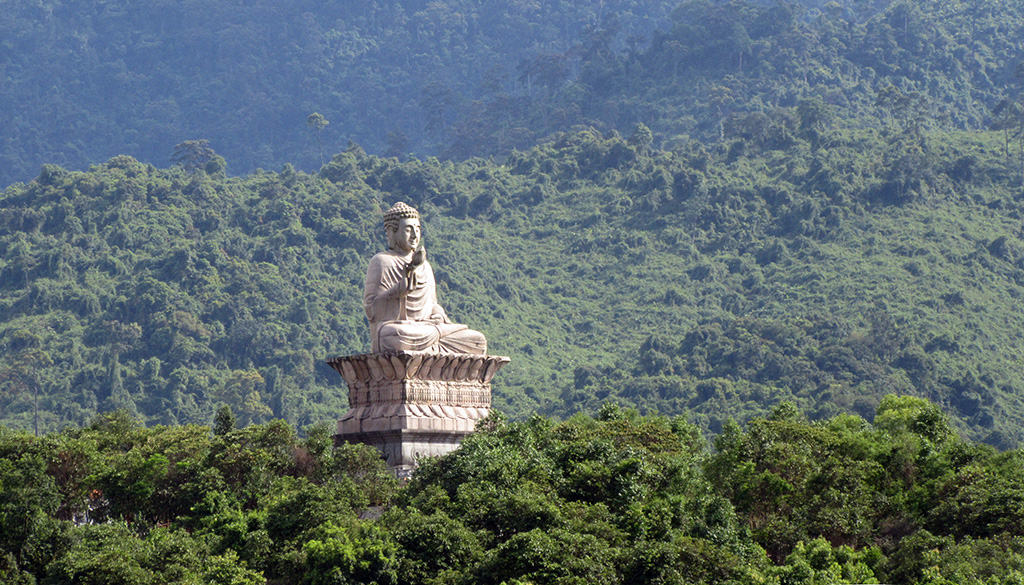
Buddha statue sacred place (Photo: ST)
Master Thuong Thanh Ha Tu was the first person to establish and establish Truc Lam Bach Ma Zen Monastery in Hue, also the first monastery in the Central region that originated from the Truc Lam Yen Tu Zen sect.
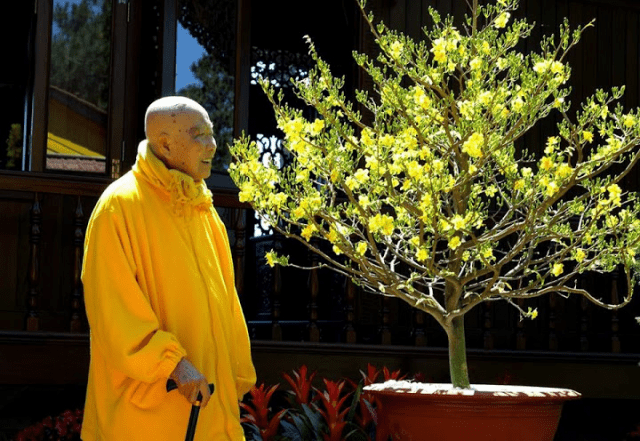
Most Venerable Master Thuong Thanh Ha Tu (Photo: ST)
From Hue City to the south about 30 km, we will meet Truoi bridge.

Truoi bridge leads to Truc Lam Bach Ma Zen Monastery (Photo: ST)
On the right is the road leading to Truoi Dam, following the river through a bend, we encounter arid land, sparsely inhabited by people, after a while, we meet a wasteland full of graves that seem to have no life. live the murky landscape.
“Painting with water is undisturbed
(The mountains are worn down, the sea is dry, all the way)
But not:
Willow is the most intelligent flower in the village.
(Blue willow, fresh flowers in a village)”
Truoi Dam appears, about 500m from the foot of the dam, Truc Lam Bach Ma Zen Monastery is neatly located in the middle of the lake. Then take the boat to the Zen Monastery.
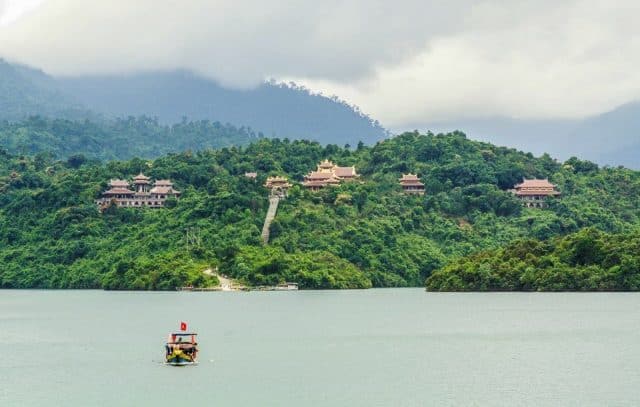
Truc Lam Bach Ma Zen Monastery is neatly located in the middle of the lake (Photo: ST)
2. Charming countryside – Truc Lam Hue Zen Monastery
Going all the way to the end of the gentle slope in the middle of the hill, the Zen Monastery gradually appears as a vivid natural picture, the mountains and forests are undulating, the grass and stones are adorned with flowers. Beneath the stream, the sound of the stream resounds like a song, and the birds race to speak. The scenery is so attractive, people seem to be smaller in front of that nature, and then gradually sink into nothingness, only the poetic nature remains.
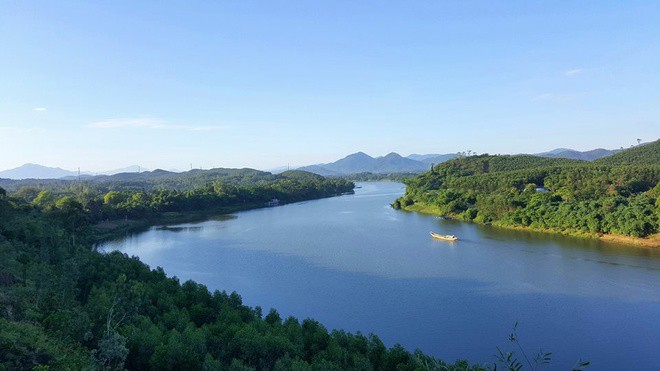
The scene of Truoi mountain – Truc Lam Bach Ma Zen Monastery (Photo: ST)
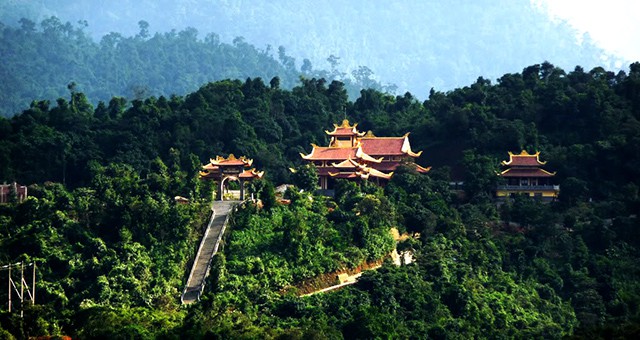
The scene of the Zen Monastery (Photo: ST)
The first person to discover Truoi mountain and Bach Ma area was a French engineer Cong Chanh. In 1932, he discovered Truoi mountain and gradually advanced to Bach Ma mountain. By 1945, people started to build Bach Ma City with 139 luxury villas in French architecture and full of public areas for life: market, hospital, post office…
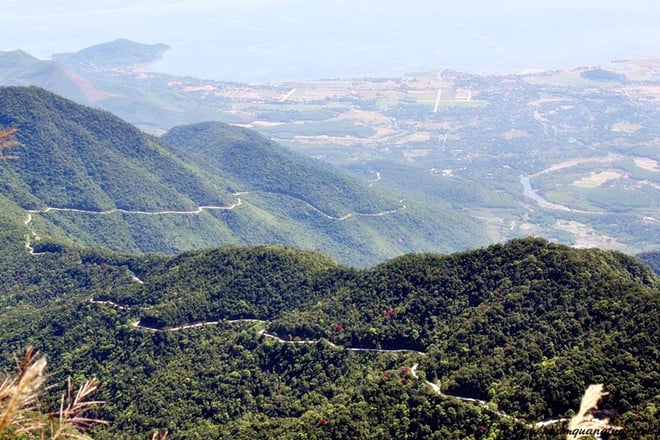
Zoom in to see the majestic Bach Ma mountain range – right next to Truc Lam Bach Ma Zen Monastery (Photo: ST)
After the war, this city seemed to have fallen into oblivion, everything seemed to remain only in the memory of the people of Hue. Today, Bach Ma has gradually revived, especially the spiritual tourist area of Truc Lam Bach Ma Zen Monastery as it adds vitality to the land. Looking from high points such as Luong Dien bridge (Troi), Ngu Binh (Hue), we see white clouds covering young heads shaped like horses. That’s why people named this mountain range Bach Ma. To Westerners, the name Bach Ma is seen as a warm, shining sun. From the Zen Monastery, looking out into the distance, you will admire the majestic natural scenery, lush green mountains and trees covered with green mountains in four seasons, clouds spreading across the mountain back.

Truc Lam Bach Ma Zen Monastery looks down (Photo: ST)
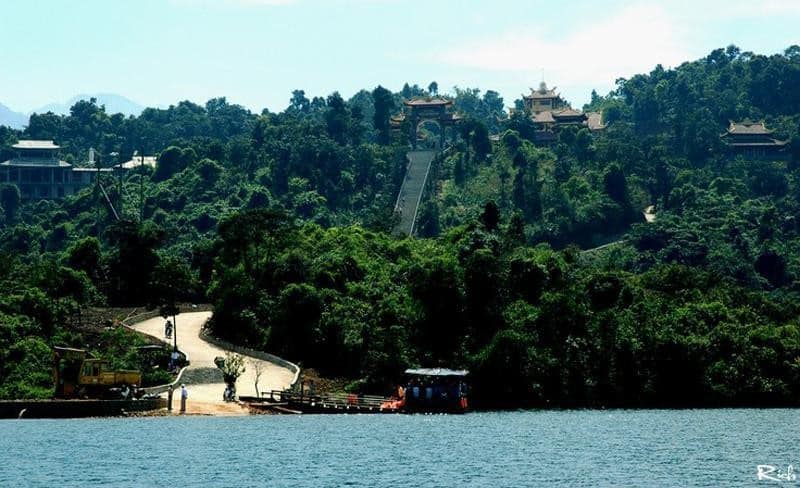
See Truc Lam Bach Ma Zen Monastery from afar (Photo: ST)
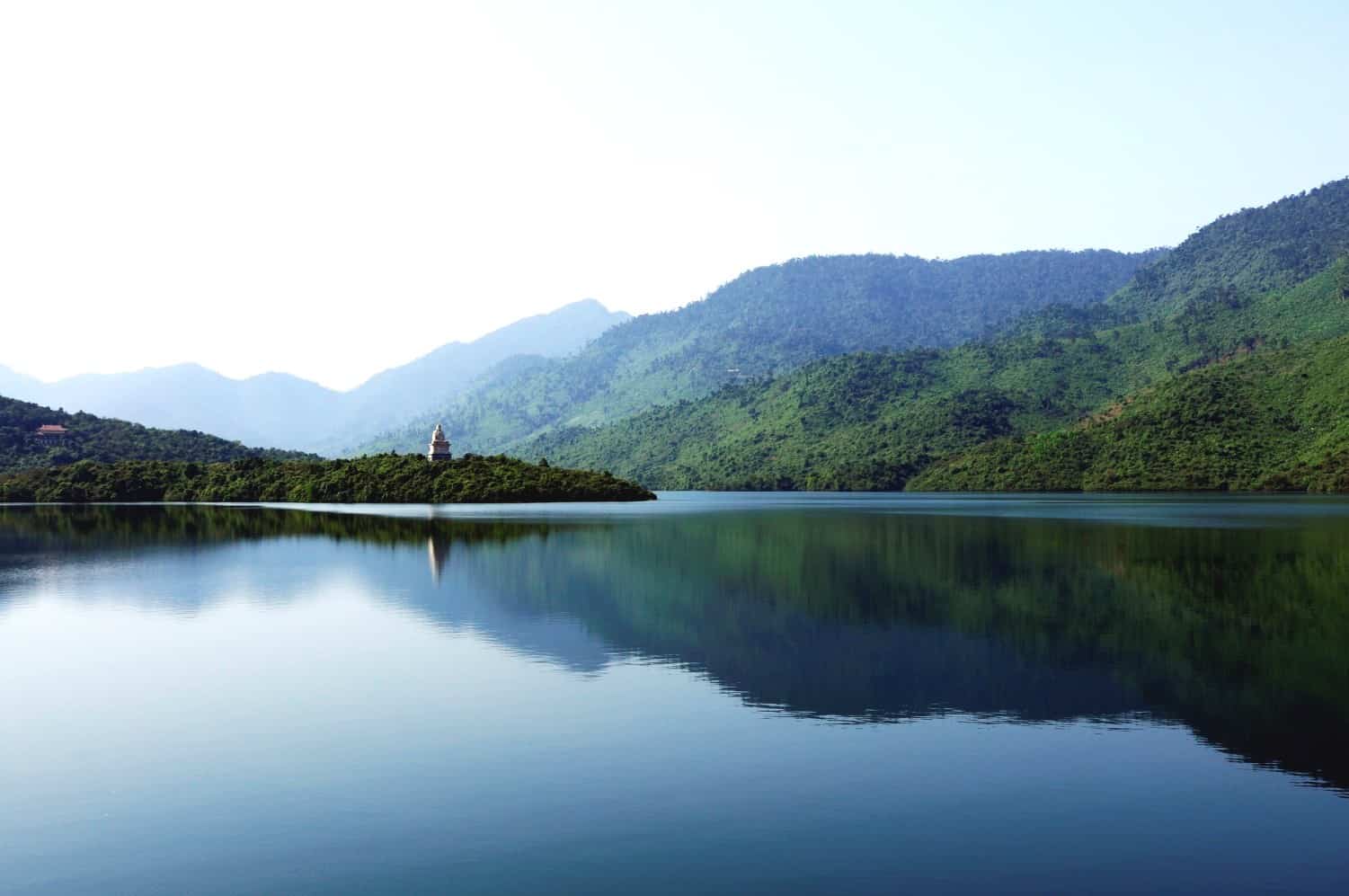
Beautiful natural scenery around – Truc Lam Bach Ma Zen Monastery (Photo: ST)
The climate in Bach Ma range is quite mild, due to its location near the sea (5km from the East Sea as the crow flies) and at an ideal height (1450m), it welcomes both continental and sea breezes. The average temperature is from 19 to 21 degrees Celsius. The climate is ideal for sightseeing tours. Truc Lam Bach Ma Zen Monastery appears in the heart of Truoi Lake like a pure lotus, leaning against the immense green Bach Ma mountains and forests. The sacred Bach Ma and the Truc Lam meditation stream seem to be intermingling and blending together to create a charming and life-filled habitat in the middle of the mountains and forests.
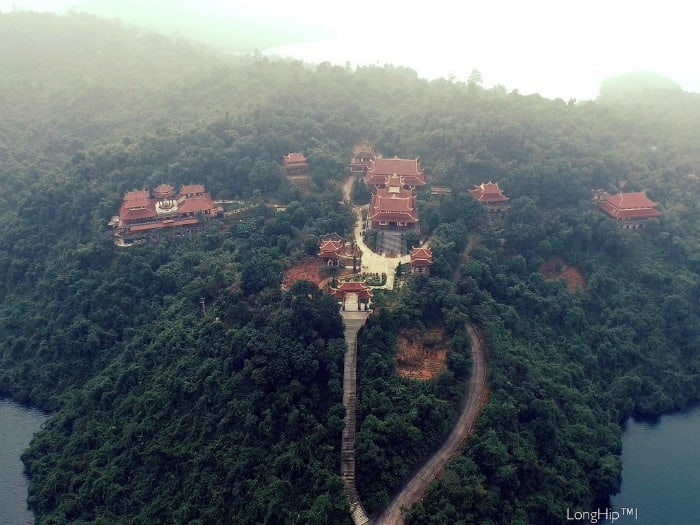
Truc Lam Bach Ma Zen Monastery in the heart of Truoi Lake (Photo: ST)
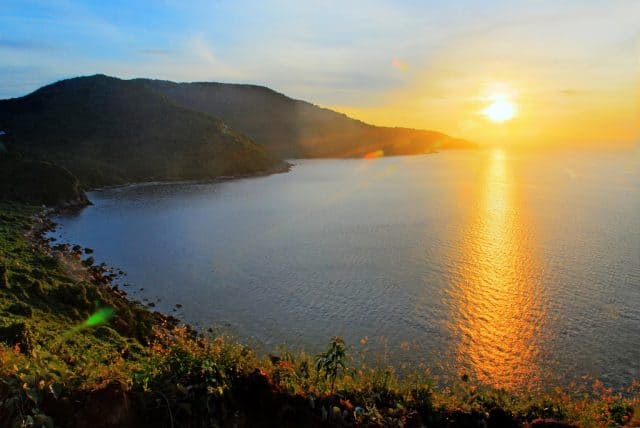
The habitat is full of life (Photo: ST)
Truc Lam Bach Ma Zen Monastery is divided into 3 areas: the outer courtyard where the main shrine, worshiping the Buddha sitting under the Bodhi tree, behind the main hall is the worshiping area for Patriarch Dat Ma of the Truc Lam Zen sect. . A monastery is a place of practice for male monks and male Buddhists, while a nunnery is a specialized area for female monks and female Buddhists.

The hospital looks in from the outside (Photo: ST)
To reach the three-door gate of Truc Lam Bach Ma Zen Monastery , venerable monks, nuns and Buddhists have to pass 172 stone steps, the three-door gate of the Zen Monastery appears high and majestic in the blue sky. You can take a walk to admire the scenery and the bold Buddhist architecture inside the Zen Monastery. All surrounded by primeval forests, lush trees, well-groomed flower gardens adorn the campus. People seem to be lost in a peaceful place without worries, their souls are lighter and more peaceful than ever.
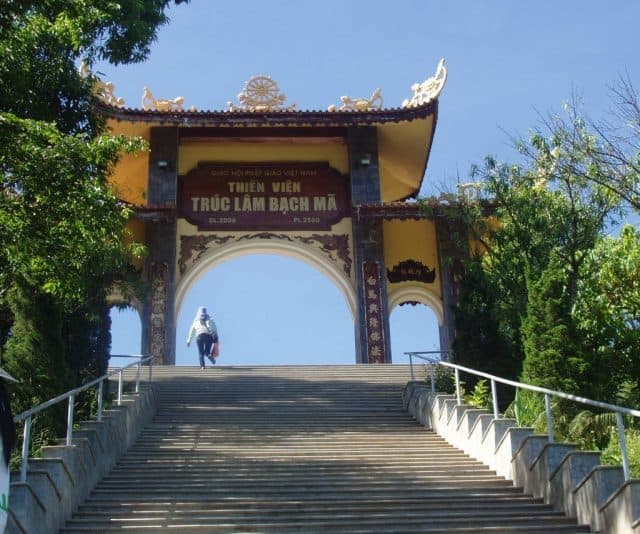
In front of Tam Quan (Photo: ST)
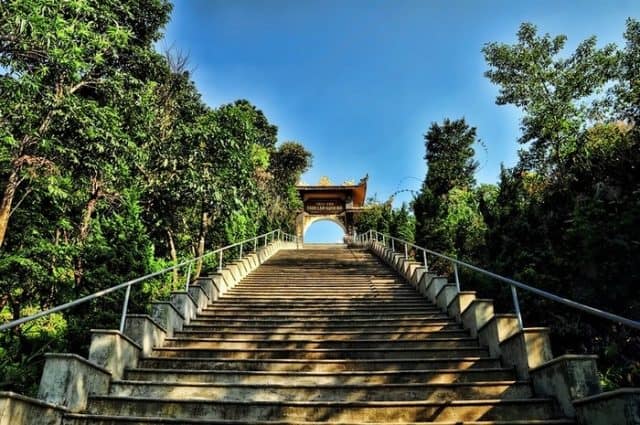
Passing 172 steps (Photo: ST)
Coming to Truc Lam Bach Ma Hue Zen Monastery, you will admire the masterpieces of Buddhist art, ancient decorative motifs, and curved pagoda roofs. People seem to be immersed in incense floating in a pure and elegant atmosphere. The sound of meditation bells echoing each beat falls into the void, flying over the water in the charming landscape of mountains and water.

Artifacts of the Dragon under the Nguyen Dynasty (Photo: ST)
The bell tower is designed according to the traditional temple architecture, including 2 floors and 8 curved roofs, roofed with tiled roofs, surrounded by carved flowers and vivid dragons.
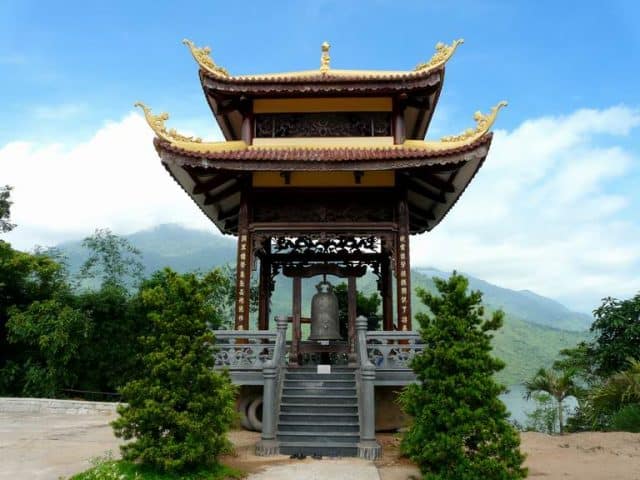
The bell tower (Photo: ST)
The gate of pagodas and Zen Monasteries (Buddhist places of worship) is usually the Tam Quan gate, which is different from the Dinh Dinh gate’s architecture, shaped like the letter J (J) pointing straight up to the sky. The Tam Quan Gate at the monastery includes 1 main gate and 2 side aisles. Each path has its own origin and meaning, the side aisle on the right is for mandarins, the small path on the left of the gate is for mandarins. And the middle way is the way for kings and politicians to be invited. Folks who go to the temple often have the idea that if they want to become a mandarin or a martial arts official, they intentionally go one of the two side paths through Tam Quan. Especially few people go straight to the middle because it is considered as blasphemy against the unethical heroic spirit above.
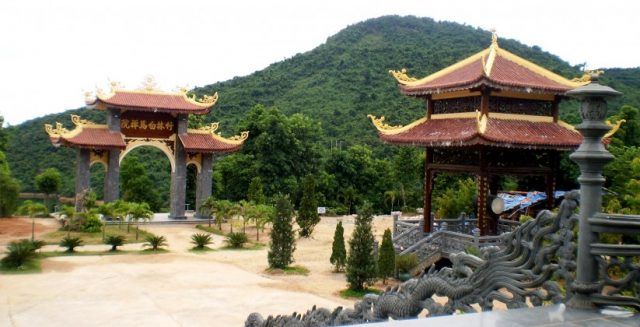
The bell tower and the three-way gate (Photo: ST)
The airy interior space is designed with wooden materials, the wooden door above has a barricade, the door of the table is about half a meter high separating the outside of the corridor and the inside of the house. This is an extremely delicate architectural feature of the ancient Vietnamese, implying that when guests come to the house, they will keep the intention not to rush into the door but to slowly lift their feet to step over the table.
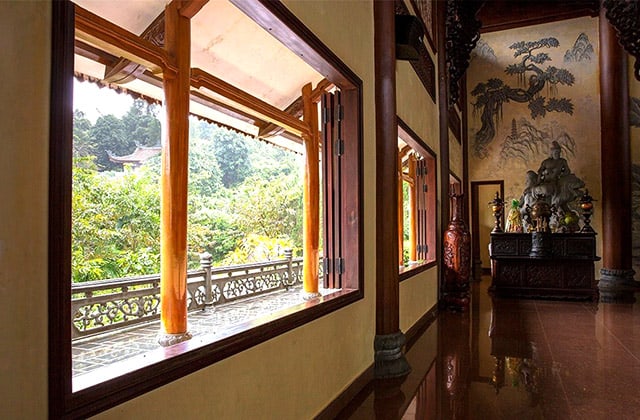
The space inside the monastery (Photo: ST)
Anyone who comes to the Zen Monastery can try to practice living in the realm of meditation, meditation means the mind. With the spirit of opening doors to everyone, anyone who comes here is facilitated by the Zen Monastery. Reaching the meditative state is when the mind is concentrated, people live in the dynamic realm but the thoughts settle down. So how can the inner world or mind settle down? When the mind is open and the heart is calm, the mind will exert its power. That state of calm and then strength is meditation.
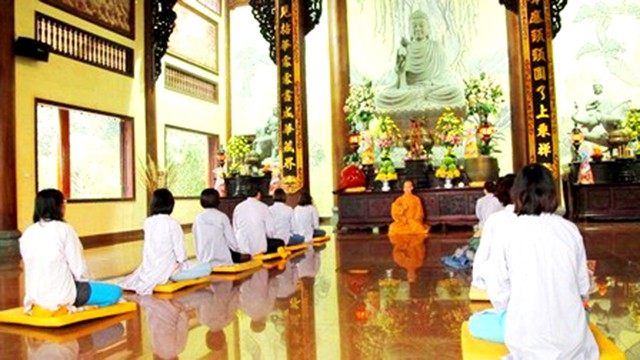
Venerables and Buddhists meditate in front of the main hall (Photo: ST)
Coming to the Zen Monastery to practice, everyone will be guided and guided by the teachers and ladies. All activities are according to the time frame here. From all eating, sleeping and living activities must follow a specific schedule, wake up to meditate for 2 hours at 3:00 am, focus on breakfast at 6:00 am, then join the labor force. After lunch, take a break for 1 hour, study Buddhism and chant in the afternoon, meditate at night from 1.5 to 10:00 pm, take a break, and at 3:00 am continue to repeat that cycle. If you are not interested in trying meditation, you can learn more about the origins of national Buddhism with images and information carved and printed on the walls at the meditation halls.
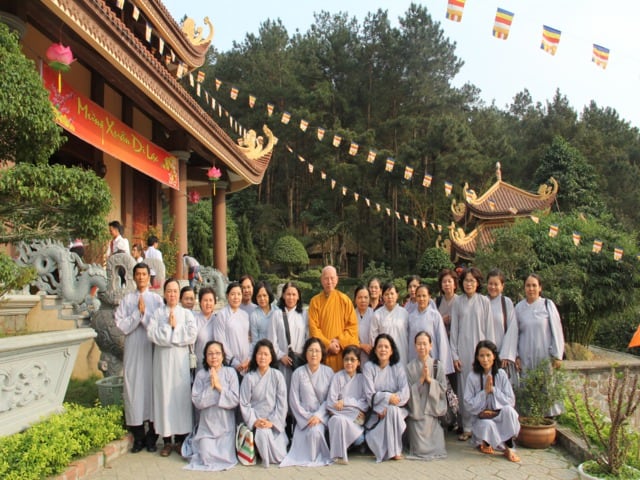
Buddhists participate in the retreat (Photo: ST)
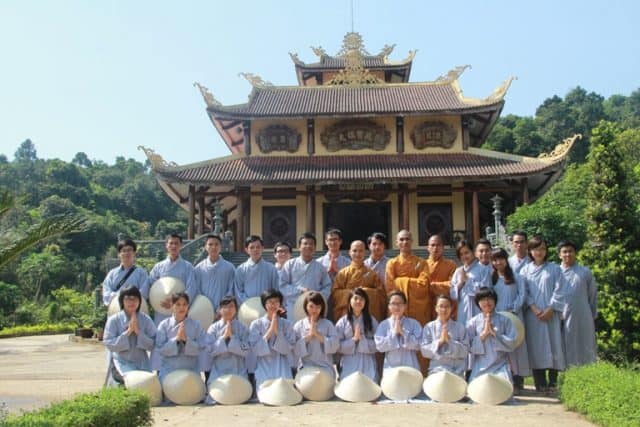
Young people also come here to practice their xinxing (Photo: ST)
Having come to Truc Lam Bach Ma Zen Monastery in Hue , you should take some time to stop by Ba Trai stream. This is one of the four famous springs in this region, containing in itself a fresh and very attractive wild look.
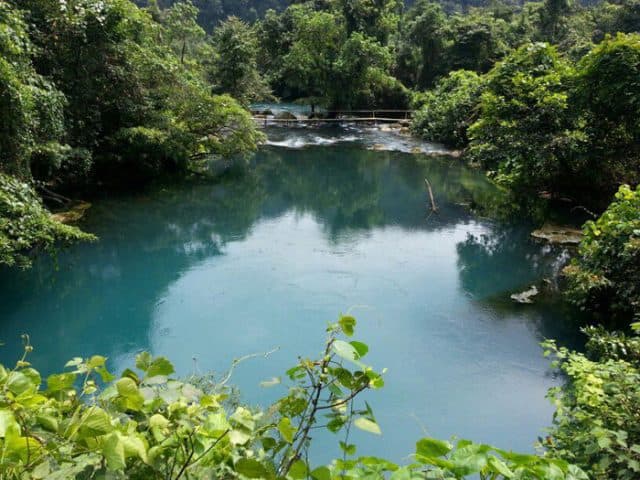
Blue spring water (Photo: ST)
Going from Truoi lake to Ba Trai stream takes about 30 minutes, so along the way you are free to take pictures of the scenery. The landscape here is pristine, all four sides are covered with mountains and forests, green trees. Below is a very mysterious blue water stream with many strange stories told by the people here.
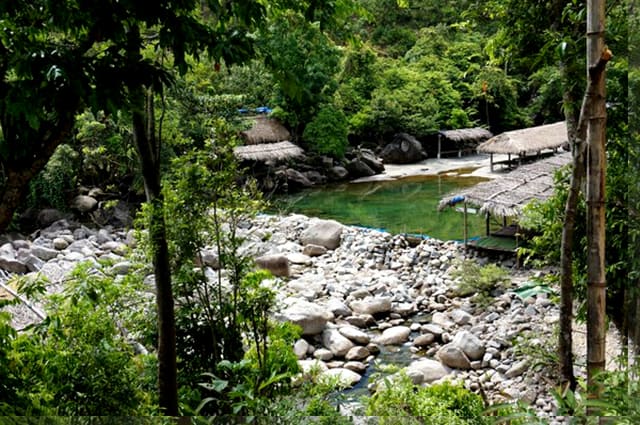
Rural space along the stream (Photo: ST)
When you come to the stream, you will be surprised by the pure beauty of the water. Stopping here, you can have fun with your loved ones in the water. If you bring fishing gear, you can drop the fishing rod and then light a fire on the shore to grill directly. Surely you will forever remember the feeling of living in the middle of that peaceful natural forest.
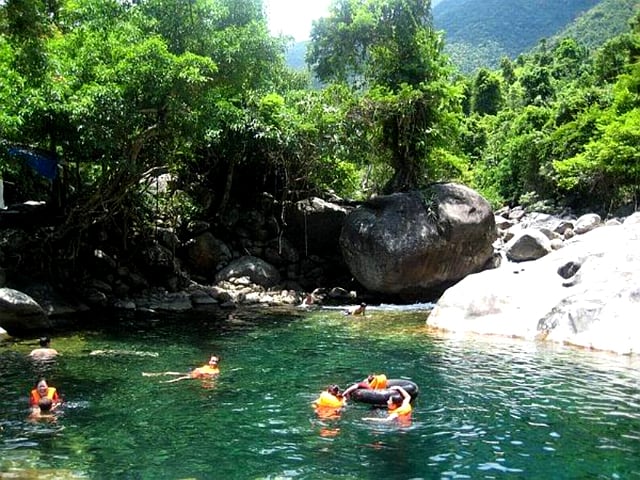
Bathing in Ba Trai stream (Photo: ST)
Leaving Phu Loc, visitors can bring back a few products of this beautiful land, such as Truoi berries and jackfruit as gifts for friends to enjoy together after a trip.
Source: Collected internet.